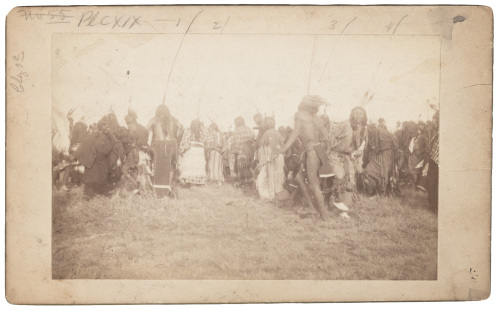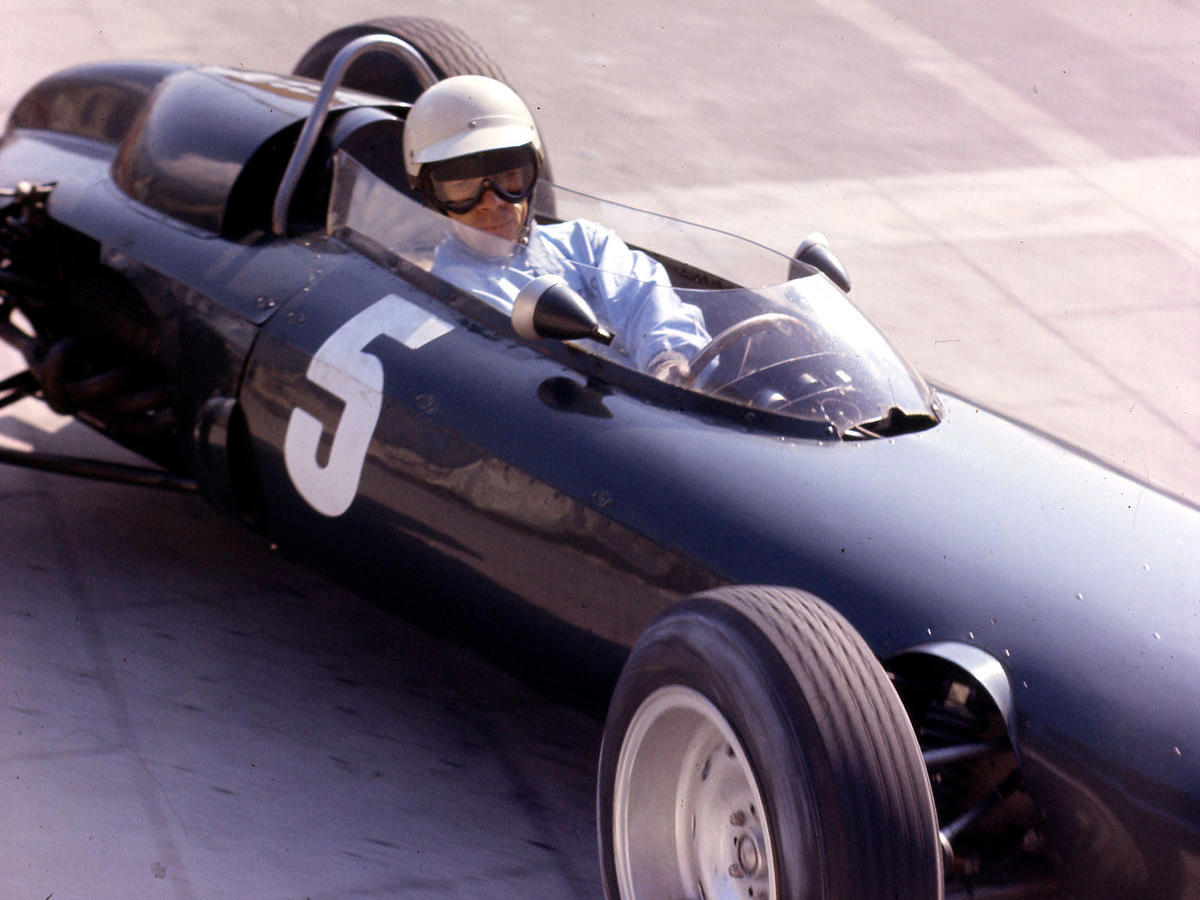A rare and potentially important early English wooden-framed turret clock movement Anonymous, believed to have been supplied to Greystoke Castle, Penrith, early 16th century or later The single-plane wooden frame enclosing three-wheel trains with both the wooden-cored capstan-wound barrels set within the centre section, the upper for the strike train fitted with ring-braced pins for the pivoted hour hammer lever to rim and pinion for driving the internal-toothed countwheel positioned within the adjacent compartment, the locking wheel separately driven by the greatwheel below with locking enabled by pair of pivoted levers (formerly interconnected) applied to the vertical frame member between, the lower barrel for the going train (formerly with verge escapement regulated by foliate balance) now driving a brass second wheel (probably mounted onto the original verge escape wheel arbor) and anchor escapement with external crutch for regulation by long pendulum, the opposite end of the going greatwheel arbor fitted with a flag for releasing the strike train, (lacking fly, strikework release detents, pendulum, lines and weights), the frame 147cm (58ins) by 128cm (50.5ins). Provenance: Hand-written correspondences included with the current lot anecdotally account the clock having been moved from Greystoke Castle to the village church (St. Andrews) for safe keeping after a fire, where it remained for a substantial period of time before being disposed-of (most likely during the 1980's) by a subsequent vicar (for scrap!). The mechanism was fortunately saved (apparently from the tip) and offered by the locally-based owner through Peter Shirley of Chatham in 1996. The clock was acquired by the late John Hooper at around this time and was subsequently inherited by the current owner. GREYSTOKE CASTLE The History of Greystoke Castle can be traced back to the 1120's with the building of a house by Llyulph (de Greystoke) on lands re-granted to him after the Norman Conquest. In 1244 the manor received Royal Charter to hold a weekly market and yearly fair, and by 1300 was in the hands of John the first Baron of Greystoke who had been summoned to parliament by writ. The house subsequently went through at least two phases of enlargement including castellation after permission was granted in 1346 by Edward III. The succession continued unbroken until 1506 when the property passed to Elizabeth de Greystoke who, being a minor and ward of the King in the custody of the Earl of Cumberland, was not able to take the manor until her subsequent marriage to Lord Dacre of Gisland. It was at this time that the House went through a third phase of building. In the 1520's the Greystoke estate passed into the ownership the Howard family through the marriage of widowed Lady Anne Dacre to Thomas Howard Duke of Norfolk. To ensure that the Greystoke estate remained in the hands of the Howard family, the Duke took in as minors Anne's three daughters who were later to marry three of his sons. During the Civil War Greystoke Castle was defended in the name of the King only to fall to a detachment of General Lambert's Army who subsequently placed a battery in the park above the castle. It has been traditionally suggested that the castle was then burnt down on the orders of Cromwell. However, The Lady Mabel Howard in her 1924 article published in the Cumberland and Westmorland Antiquarian and Archeological Society's Transactions (Vol. XXIV) firmly asserted that this was not the case. Notwithstanding this the fortunes of the Castle and estate took time recover however, by the mid 18th century, wealth and prosperity had returned to the extent that renovations and enlargements were able to take place in 1789. The castle was again remodelled in 1838-48 by Anthony Salvin however, in 1868, a maid left a lighted candle in a cupboard full of linen and the consequent fire gutted significant parts of the castle. The damage was subsequently repaired and restored in the 1880's by Henr
A rare and potentially important early English wooden-framed turret clock movement Anonymous, believed to have been supplied to Greystoke Castle, Penrith, early 16th century or later The single-plane wooden frame enclosing three-wheel trains with both the wooden-cored capstan-wound barrels set within the centre section, the upper for the strike train fitted with ring-braced pins for the pivoted hour hammer lever to rim and pinion for driving the internal-toothed countwheel positioned within the adjacent compartment, the locking wheel separately driven by the greatwheel below with locking enabled by pair of pivoted levers (formerly interconnected) applied to the vertical frame member between, the lower barrel for the going train (formerly with verge escapement regulated by foliate balance) now driving a brass second wheel (probably mounted onto the original verge escape wheel arbor) and anchor escapement with external crutch for regulation by long pendulum, the opposite end of the going greatwheel arbor fitted with a flag for releasing the strike train, (lacking fly, strikework release detents, pendulum, lines and weights), the frame 147cm (58ins) by 128cm (50.5ins). Provenance: Hand-written correspondences included with the current lot anecdotally account the clock having been moved from Greystoke Castle to the village church (St. Andrews) for safe keeping after a fire, where it remained for a substantial period of time before being disposed-of (most likely during the 1980's) by a subsequent vicar (for scrap!). The mechanism was fortunately saved (apparently from the tip) and offered by the locally-based owner through Peter Shirley of Chatham in 1996. The clock was acquired by the late John Hooper at around this time and was subsequently inherited by the current owner. GREYSTOKE CASTLE The History of Greystoke Castle can be traced back to the 1120's with the building of a house by Llyulph (de Greystoke) on lands re-granted to him after the Norman Conquest. In 1244 the manor received Royal Charter to hold a weekly market and yearly fair, and by 1300 was in the hands of John the first Baron of Greystoke who had been summoned to parliament by writ. The house subsequently went through at least two phases of enlargement including castellation after permission was granted in 1346 by Edward III. The succession continued unbroken until 1506 when the property passed to Elizabeth de Greystoke who, being a minor and ward of the King in the custody of the Earl of Cumberland, was not able to take the manor until her subsequent marriage to Lord Dacre of Gisland. It was at this time that the House went through a third phase of building. In the 1520's the Greystoke estate passed into the ownership the Howard family through the marriage of widowed Lady Anne Dacre to Thomas Howard Duke of Norfolk. To ensure that the Greystoke estate remained in the hands of the Howard family, the Duke took in as minors Anne's three daughters who were later to marry three of his sons. During the Civil War Greystoke Castle was defended in the name of the King only to fall to a detachment of General Lambert's Army who subsequently placed a battery in the park above the castle. It has been traditionally suggested that the castle was then burnt down on the orders of Cromwell. However, The Lady Mabel Howard in her 1924 article published in the Cumberland and Westmorland Antiquarian and Archeological Society's Transactions (Vol. XXIV) firmly asserted that this was not the case. Notwithstanding this the fortunes of the Castle and estate took time recover however, by the mid 18th century, wealth and prosperity had returned to the extent that renovations and enlargements were able to take place in 1789. The castle was again remodelled in 1838-48 by Anthony Salvin however, in 1868, a maid left a lighted candle in a cupboard full of linen and the consequent fire gutted significant parts of the castle. The damage was subsequently repaired and restored in the 1880's by Henr















Try LotSearch and its premium features for 7 days - without any costs!
Be notified automatically about new items in upcoming auctions.
Create an alert